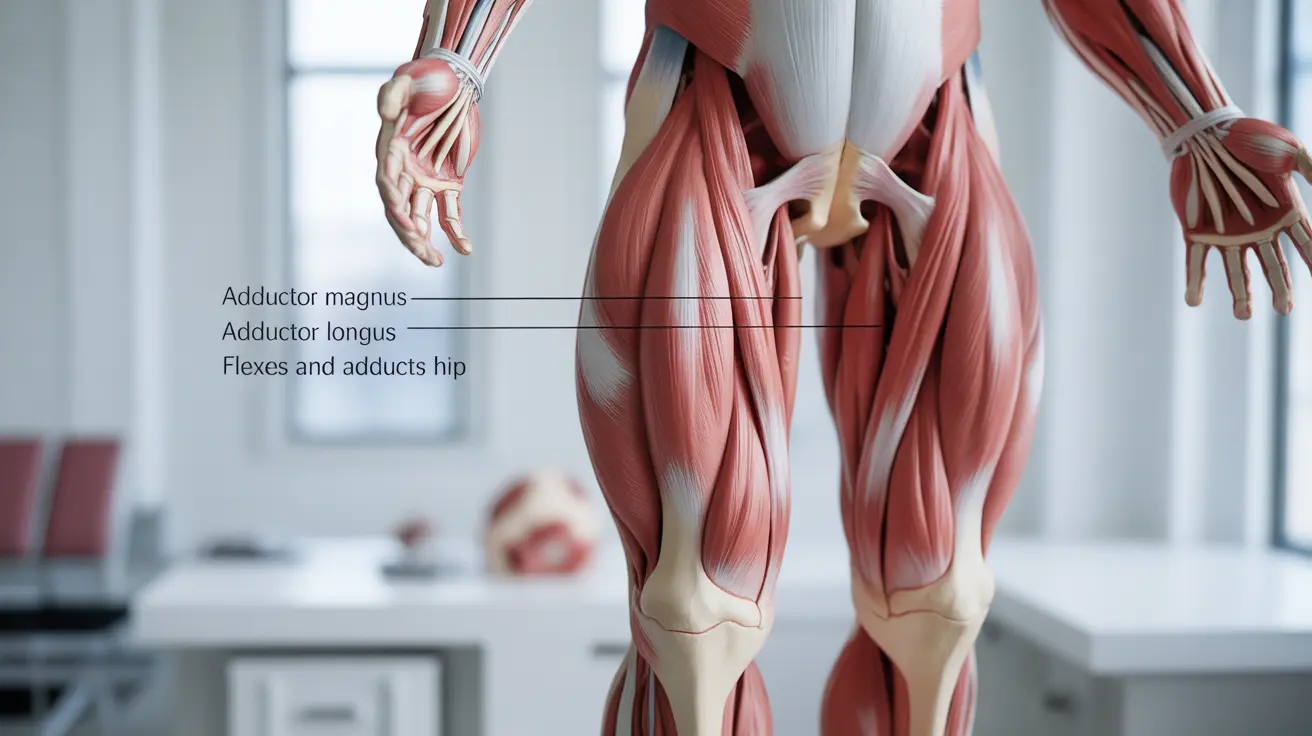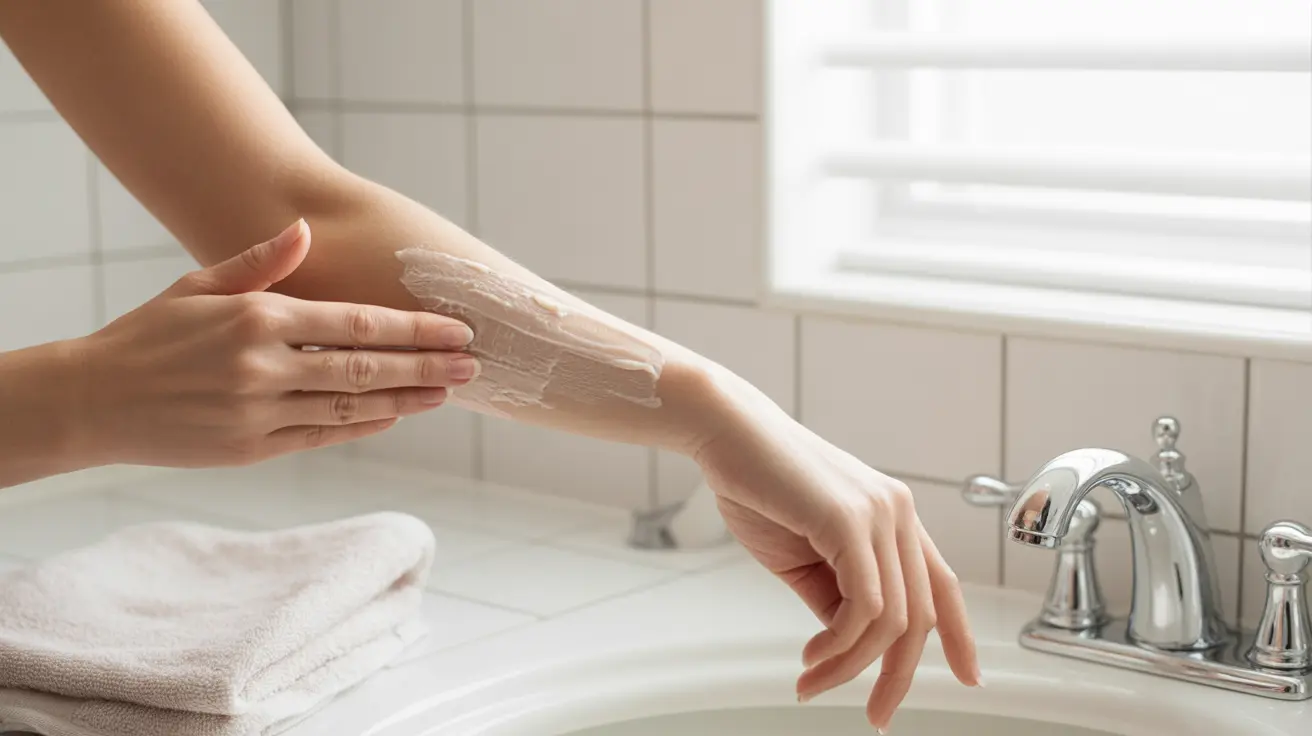The adductor muscles play a crucial role in lower body movement and stability, yet they're often overlooked until an injury occurs. These powerful muscles, located on the inner thigh, are responsible for bringing your legs together and providing stability during various activities from walking to athletic performance.
Understanding the anatomy, function, and potential issues with your adductor muscles can help you maintain better hip health, prevent injuries, and recover more effectively if problems do arise. Whether you're an athlete dealing with a groin strain or someone experiencing inner thigh discomfort during daily activities, learning about these important muscles is essential for optimal movement and long-term mobility.
Anatomy and Function of the Adductor Muscles
The adductor muscle group consists of several muscles that work together to control hip movement. The adductor longus, which is the most prominent and frequently injured of these muscles, originates from the pubic bone and extends down to attach to the middle portion of the thigh bone (femur). This strategic positioning allows it to perform its primary function of adduction, or drawing the leg toward the body's midline.
Beyond simple adduction, these muscles contribute significantly to hip stability during weight-bearing activities. They work in coordination with other hip muscles to maintain proper alignment and control during walking, running, and changing directions. The adductor muscles also assist with hip flexion and provide rotational control, making them essential for athletic movements and everyday activities.
The muscle group receives its nerve supply primarily from the obturator nerve, which branches from the lumbar plexus. Blood supply comes from various sources, including branches of the profunda femoris artery and the obturator artery. This rich vascular network is crucial for muscle function and plays a vital role in healing when injuries occur.
Common Causes and Risk Factors for Adductor Injuries
Adductor muscle strains typically occur when these muscles are stretched beyond their normal range or contracted forcefully while in a lengthened position. Sports that involve sudden direction changes, such as soccer, hockey, and tennis, place athletes at higher risk for these injuries. The explosive movements required for kicking, pivoting, and lateral movements can overwhelm the muscle's capacity to handle stress.
Several factors can increase your susceptibility to adductor injuries. Poor flexibility in the hip and groin region creates muscle imbalances that place additional stress on the adductor muscles. Weakness in the core and hip stabilizing muscles forces the adductors to work harder to maintain stability, leading to overuse and potential injury.
Previous injuries to the groin or hip area can create scar tissue and alter movement patterns, predisposing you to future problems. Inadequate warm-up before physical activity, fatigue, and returning to activity too quickly after an injury are also significant risk factors that can lead to adductor muscle problems.
Prevention Strategies and Safe Strengthening
Preventing adductor injuries requires a comprehensive approach that addresses flexibility, strength, and movement quality. Regular stretching of the adductor muscles should be incorporated into your routine, but it's important to perform these stretches correctly and consistently. Dynamic warm-ups before activity help prepare the muscles for the demands they'll face during exercise or sports.
Strengthening exercises should focus not only on the adductor muscles themselves but also on the entire hip complex. Exercises like side-lying leg lifts, standing hip adduction with resistance bands, and ball squeezes between the knees can help build adductor strength. However, it's equally important to strengthen the opposing muscle groups, including the glutes and hip abductors, to maintain proper muscle balance.
Progressive loading is key to safe strengthening. Start with low-resistance exercises and gradually increase the intensity as your muscles adapt. This approach allows the tissues to strengthen without overwhelming them, reducing the risk of injury during the strengthening process itself.
Rehabilitation and Recovery Approaches
When an adductor injury does occur, proper rehabilitation is essential for complete recovery and preventing re-injury. The initial phase typically involves rest, ice application, and avoiding activities that cause pain. This allows the acute inflammation to subside and prevents further tissue damage.
As healing progresses, gentle stretching and range of motion exercises help maintain flexibility and prevent excessive scar tissue formation. Isometric strengthening exercises, where the muscle contracts without movement, can begin early in the rehabilitation process. These exercises help maintain muscle strength while minimizing stress on the healing tissues.
Later phases of rehabilitation focus on restoring full strength and function through progressive exercises. This might include eccentric strengthening, where the muscle lengthens while contracting, which is particularly important for preventing future strains. Sport-specific exercises and movement patterns are gradually reintroduced to prepare for return to full activity.
Daily Activities and Movement Patterns
The adductor muscles contribute to stability and control during many everyday activities, even when we're not consciously aware of their involvement. When walking, these muscles help control the position of the leg during the swing phase and provide stability when the foot contacts the ground. They work continuously to maintain proper leg alignment and prevent excessive inward or outward movement of the thigh.
During activities like getting in and out of a car, climbing stairs, or stepping sideways, the adductor muscles provide crucial stability and control. They help coordinate the complex movements required for these tasks while maintaining balance and preventing falls. Understanding this role helps explain why adductor injuries can significantly impact daily function, not just athletic performance.
The muscles also play a protective role during unexpected movements or when balance is challenged. They can quickly contract to help maintain stability and prevent injury to other structures around the hip and pelvis.
Frequently Asked Questions
What are the common symptoms and causes of an adductor longus muscle strain or injury?
Common symptoms include sharp or aching pain in the inner thigh or groin area, muscle stiffness, swelling, and difficulty bringing the legs together. The pain typically worsens with activities like walking, running, or climbing stairs. Causes include sudden forceful movements, inadequate warm-up, muscle imbalances, previous injuries, and sports involving rapid direction changes or kicking motions.
How can I safely stretch and strengthen my adductor muscles to prevent groin injuries?
Safe stretching includes butterfly stretches, standing groin stretches, and side lunges performed gently and held for 20-30 seconds. For strengthening, start with ball squeezes between the knees, side-lying leg lifts, and resistance band exercises. Always warm up before stretching, progress gradually, and focus on balanced strengthening of both adductor and opposing muscle groups to prevent imbalances.
What types of exercises are recommended for rehabilitation after an adductor longus strain?
Rehabilitation typically progresses through phases: initial rest and gentle range of motion, followed by isometric exercises like wall squats with ball squeeze. Later phases include eccentric strengthening with controlled leg lowering exercises, functional movements like lateral lunges, and sport-specific activities. Each phase should be pain-free and progress gradually under professional guidance when possible.
How does the adductor longus muscle contribute to hip movement and stability during daily activities?
The adductor longus helps bring the leg toward the body's midline, assists with hip flexion, and provides rotational control. During daily activities, it maintains leg alignment while walking, provides stability when changing directions, and coordinates complex movements like getting in and out of cars or climbing stairs. It works continuously to prevent excessive leg movement and maintain balance during weight-bearing activities.
What nerves and blood vessels supply the adductor longus muscle, and why is this important for injury recovery?
The adductor longus receives nerve supply primarily from the obturator nerve and blood supply from branches of the profunda femoris and obturator arteries. This rich innervation and vascular supply are crucial for muscle function and healing. Adequate blood flow delivers nutrients and oxygen needed for tissue repair, while proper nerve function ensures coordinated muscle activation during rehabilitation exercises and return to normal activities.




